Skype: neodalle-travel
Tel: +86 135 7447 2266
E-mail: sales@visitaroundchina.com
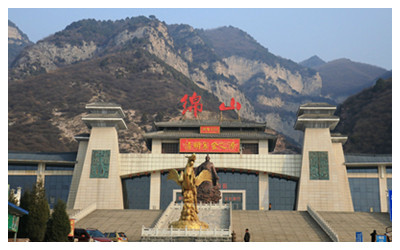 Mianshan Mountain is 20 kilometers away from Jiexiu City, Shanxi Province. It has also been named Jieshan Mountain after Jie Zitui, a famous official in the Spring and Autumn Period (770 - 476 BC). Covering an area of 295 square kilometers, with its highest peak 2,566.6 meters above sea-level, Mianshan Mountain is not only renowned as the location of both Buddhist and Taoist temples, but also its unique natural scenery.
Mianshan Mountain is 20 kilometers away from Jiexiu City, Shanxi Province. It has also been named Jieshan Mountain after Jie Zitui, a famous official in the Spring and Autumn Period (770 - 476 BC). Covering an area of 295 square kilometers, with its highest peak 2,566.6 meters above sea-level, Mianshan Mountain is not only renowned as the location of both Buddhist and Taoist temples, but also its unique natural scenery.
What to see?
A thorough tour to this mountain takes one or two days. There are over 360 scenic spots scattered over 14 areas including Dragon Head Temple, Dragon Backbone Ridge, Princess Li Cave, Honeycomb Spring, Daluo Taoist Temple, Heavenly Bridge, One-Cup Spring, Zhu Family Hollow, Yunfeng Temple, Zhengguo Temple, Lord Jie Ridge, Qixian Valley, Ancient Vine Valley, and Water Wave Valley. The mountain is also the birthplace of the Cold Food Festival (the day before Qingming Festival), with an exhibition hall showing the local traditions of this time-honored Chinese festival. The following is an introduction to the most famous sites that tourists should be sure to visit.
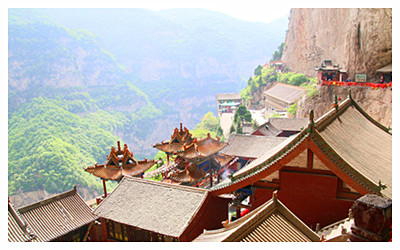 Yunfeng Temple
Yunfeng Temple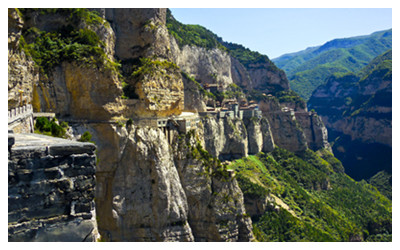 Daluo Taoist Temple
Daluo Taoist Temple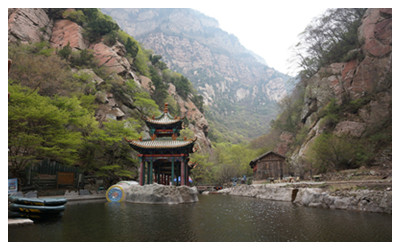 In olden times, the Cold Food Festival was held annually to commemorate Jie Zitui on the day he died. The use of fires was forbidden, so people only ate cold food. The day after the Cold Food Festival was Qingming Festival. Nowadays, these two festivals are combined as one event. Using high-tech methods like touchable screens and electronic interactive activities to reproduce the real scene, Qingming Cold Food Culture Hall demonstrates the historical development and folk customs of the two festivals, such as tomb-sweeping, sacrificing, spring outing, and sticking willow branches.
In olden times, the Cold Food Festival was held annually to commemorate Jie Zitui on the day he died. The use of fires was forbidden, so people only ate cold food. The day after the Cold Food Festival was Qingming Festival. Nowadays, these two festivals are combined as one event. Using high-tech methods like touchable screens and electronic interactive activities to reproduce the real scene, Qingming Cold Food Culture Hall demonstrates the historical development and folk customs of the two festivals, such as tomb-sweeping, sacrificing, spring outing, and sticking willow branches. 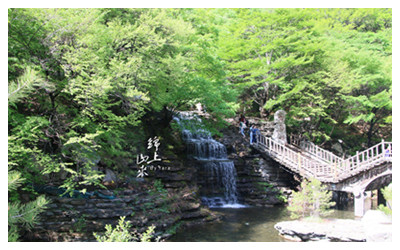 mysterious and secluded environment. Visitors need to climb more than ten ladders to go through the valley. The ladders are made of wooden boards. One end of each is embedded in the cliff face while the other is unsupported and appears to hang in the sky. As there is no handrail, visitors need to hold onto the rocks to pass the narrow valley. There are many unique plants growing on the vertical precipices, attracting numerous butterflies.
mysterious and secluded environment. Visitors need to climb more than ten ladders to go through the valley. The ladders are made of wooden boards. One end of each is embedded in the cliff face while the other is unsupported and appears to hang in the sky. As there is no handrail, visitors need to hold onto the rocks to pass the narrow valley. There are many unique plants growing on the vertical precipices, attracting numerous butterflies.Travel Tips
Address: Yijiazhuang Village, Jiexiu City, Jinzhong City
Phone: 0354-7055111,0354-7055055
Opening hours: April 1st-October 31st 8: 00-19: 30; November 1st-March 31st 8: 30-18: 00.
Entrance Fees: CNY 238
 Ask Questions ?
Ask Questions ?